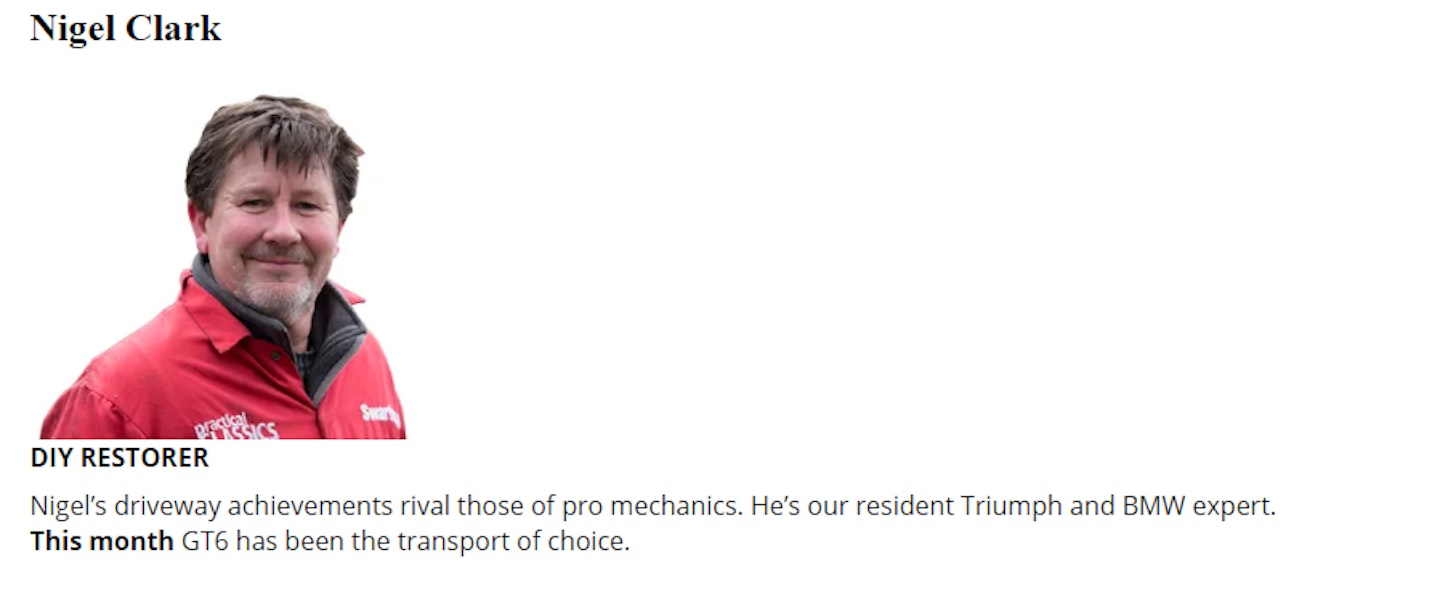Tech solutions and real world tips





IGNITION
My car stops after 30 minutes!
Q My 1978 Vauxhall Viva conks out after 30 minutes' running. It starts off fine, then misses, cuts out and finally stops. I've noticed the coil gets very hot. Mark Mountfield, York.

VINTAGE VOLTAGE
If a pre-war classic has a manual charging switch on the dash, don't leave it in the high position for more than 5-10 minutes after starting.
SHORT(ER) CIRCUIT
If (carefully) wiring coil + directly to battery + solves your problem, the fault is in the ignition wiring.
TACHOMETER
Smiths RVI tachometers: the ignition circuit passes through the tachometer. Are the connections sound? Try bypassing it.
Ed says:
A We'll generalise, starting with the hot coil. Is the car over-charging? You should measure about 14.5V across the battery with lights off, engine running fast. If the voltage regulator fails, the increased voltage pushes excess current through the coil, overheating it and causing failure.
Next, check the points gap. Too small a gap, and the coil stays 'on' much longer than it should during its normal cycle, which overheats it. Now measure the resistance of the coil between + and - terminals. For points ignition it should be 5 – 7Ω (standard coil) or 3Ω ('sports' coil); no less. With ballast ignition, the coil resistance may be less, or be rated at a lower voltage – see manual.
Has someone bypassed the ballast resistor, allowing unrestricted current through at all times? Also, is the coil the right way round? If the + and wires are reversed, the result is a very weak spark when the engine gets hot, and difficult restarting. The conking-out problem may be the coil, but maybe not. Try another condenser – they're famous for playing up when hot and acting fine again when cool. The car would break down in exactly the way you describe.
Give all the 12V ignition wires a tug to make sure they're securely attached, firmly crimped and not broken or frayed. High resistance causes heat, causing higher resistance and so on. Also, check the ignition switch isn't red-hot due to poor contact.
Scrutinise the distributor: check the 12V wire braid to the points is in good order and that the earth braid is intact. In both cases, the ends are prone to fraying. Make sure the points are free to open and close and that the plastic pivot bush isn't swollen, causing the points to bind in the open position. Do also make sure the distributor can earth to the engine by cleaning around the retaining clamp or collar.

GETTING SEDIMENTAL
Q I’ve just bought a 1985 Vauxhall Carlton estate. While I had the fuel tank off, I could hear that something was rattling around inside – possibly loose bits of rust. How can I get rid of this? Russell Newell, Morecambe, Lancs.

Matt says:
A The best way to remove debris from a tank is to remove it, put liquid in it and swill it around. With the liquid still on the move, vigorously pour it out into a bowl or funnel. Let the sediment settle in the bowl, then pour the liquid back into the tank via a sieve. Repeat as necessary. For safety reasons, use diesel or paraffin. Some tanks are awkward because their shape doesn't allow a straight flow of liquid to be sloshed out and down the filler neck. You could try emptying it via the tank sender unit hole, but this will depend on its design. If the tank has baffles in it then the task may be nigh on impossible. An alternative, easier strategy is to simply install a reusable glass fuel filter as close to the tank as possible. Make sure you inspect and clean it on a regular basis.
Want to read on? Subscribe to a PC Print + Digital subscription today and you'll get instant digital access to this article PLUS FREE UK delivery so you'll never miss a copy of PC again.
